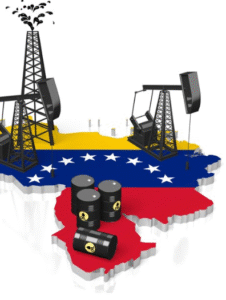$UBS $ANZ $GLD
#Gold #UBS #ANZ #GoldPrices #RateCuts #Inflation #Geopolitics #Tariffs #Commodities #Investing #Fed #Markets
Banking giants UBS and ANZ have significantly raised their gold price targets, projecting a move above the critical $3,000 per ounce level. UBS now sees gold reaching $3,200 per ounce, citing a combination of macroeconomic factors, including central bank rate cuts, escalating geopolitical tensions, and rising trade tariffs. Likewise, ANZ follows suit, highlighting strong demand for gold as a safe-haven asset amid global uncertainty. The latest upward revision underscores growing investor confidence in the metal’s potential for further gains, with central bank purchases and retail interest providing additional support. As inflation concerns persist and the Federal Reserve adopts a more accommodative stance on monetary policy, analysts argue that gold remains poised for continued strength in the coming months.
One of the primary catalysts for gold’s surge is the increasing likelihood of multiple interest rate cuts by the U.S. Federal Reserve. With inflationary pressures still weighing on consumer and business activity, policymakers may be forced to ease further in an attempt to stabilize economic growth. Historically, lower rates have made non-yielding assets like gold more attractive, as they reduce the opportunity cost of holding bullion. Additionally, ongoing concerns about global economic weakness, particularly in China and Europe, have driven investors toward gold as a hedge against potential downturns. UBS and ANZ both indicate that sustained weakness in the U.S. dollar, coupled with investor caution regarding other asset classes, will likely contribute to gold’s continued rally in the second half of the year.
Geopolitical risks are another factor fueling gold’s upward momentum. Heightened tensions in Eastern Europe, ongoing instability in the Middle East, and increasing trade conflicts between major economies have added to market jitters. As geopolitical uncertainties intensify, the demand for safe-haven assets like gold has risen sharply, pushing prices higher. The recent imposition of new tariffs on Chinese imports by the United States has also added to market volatility, raising fears of a prolonged trade war that could disrupt global supply chains. Amid these concerns, institutional and retail investors alike have continued to seek refuge in gold as a store of value. UBS analysts emphasize that any further escalation of trade or geopolitical conflicts could serve as a tailwind, supporting higher price targets moving forward.
In addition to macroeconomic and geopolitical drivers, central bank buying trends have played a major role in gold’s recent strength. Data shows that global central banks have been accumulating gold reserves at an accelerated pace, with countries such as China, Russia, and India increasing their bullion holdings. This sustained demand signals confidence in gold’s role as a long-term hedge against currency devaluation and financial instability. As the broader commodity market sees increased interest from institutional investors, ETFs tracking gold prices have also witnessed strong inflows, further reinforcing bullish sentiment. With UBS and ANZ revising their targets higher, market participants are taking note, positioning gold as a key asset class for portfolio diversification in an increasingly uncertain economic landscape.











Comments are closed.